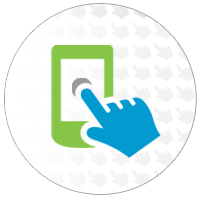- We map the website with relevant content for your audience
- User-pathways increase website conversions
- Improve website usability with an intuitive layout

The Key Elements of Information Architecture (IA) & User Experience (UX)
User experience takes Information as its foundation and brings your website to the next level. It gives out that ‘wow factor’ and makes website browsing easy and a bit exciting. With intuitive navigation and well-structured content, your website will provide a smooth and seamless buyer’s journey for your target audience.

Defining Your Business User Persona
A great website user experience starts with knowing who your visitors are on a more personal level. It’s important to know why they are coming to your website and what’s the best approach to keep them engaged. You can use this information to map a wireframe and later on to determine what kind of content you need, style and tone.

Designing a Wireframe for Your Business
We design websites from the ground-up using wireframes with user personas and UX in mind. We ensure that the entire design process is streamlined, content and messaging are clear and there is well thought out placement of call-to-action.

Streamlining the Navigation Experience for Your Visitors
No matter how big your website is, “less is more” in your navigation structure has always been an ideal way to keep users engaged with your business. Users tend to click away if your site is cluttered and too difficult to browse.
When streamlining the navigation experience of the websites we create, we follow 3 simple principles: The website should
- prevent users from getting lost
- facilitate decision-making
- keep them curious and excited.

Structuring and Managing Your Content Appropriately
Structuring and managing content also involves presentation. It should be organized, neat and has a lot of white space. Having too much content on a page can overload users. The fact is that people rarely read web pages word by word; instead they scan the page and only pick out bits of information that is relevant to them. We can help you structure and manage your content that highlights valuable information for our target audience, which can sway them toward a conversion.

